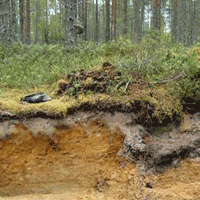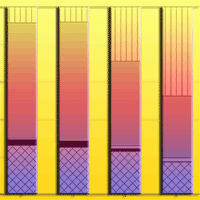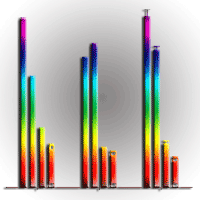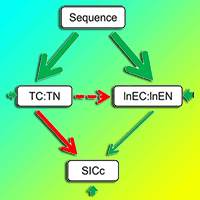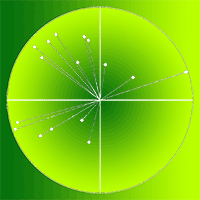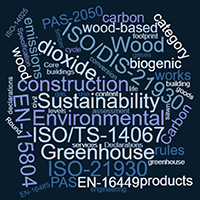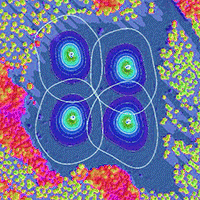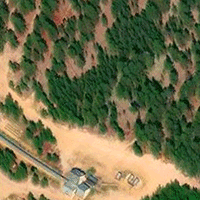
Temporal patterns control carbon balance in forest and agricultural tropical peatlands in North Selangor, Malaysia
Jeyanny Vijayanathan (1) , Mohammad Fakhri Ishak (1), Ismail Parlan (1), Hamdan Omar (1), Ahmed Osumanu Haruna (2-3), Marryanna Lion (1), Mohd Ghazali Hassan (1), Regina Mariah Jong (4), Abdul Khalim Abu Samah (4)
iForest - Biogeosciences and Forestry, Volume 14, Issue 4, Pages 362-369 (2021)
doi: https://doi.org/10.3832/ifor3700-014
Published: Aug 10, 2021 - Copyright © 2021 SISEF
Research Articles
Abstract
Tropical peat swamp forests can sequester significant amount of carbon (C). However, there is dearth of understanding on the tropical soils’ C stocks and emissions because of the changes in peatland use, land use policies, and micro-climate. The objective of this study was to determine the C stocks and fluxes of two peat swamp forests and a peatland under mixed cropping in Selangor, Malaysia. Standard procedures were used to determine aboveground biomass, belowground biomass, selected peat soil physical, chemical, and biological properties, and environmental variables that are related to peat soil respirations. The mean C stocks for the peat swamp forest and mixed cropping sites were 1788.79 Mg C ha-1 and 1023.57 Mg C ha-1, respectively. The carbon dioxide emission rates of peat swamp forest and mixed cropping sites ranged from 7.20 to 73.13 tCO2 ha-1 year-1 and 26.50 to 43.43 tCO2 ha-1 year-1, respectively. These emissions are related to seasonal changes because the relative humidity, soil temperature, and ground water of the experimental sites had significant effects on soil respiration. Unlike the mixed cropping sites, the fluxes of the peat swamp forest were significantly higher in the dry season compared with the wet season. These findings suggest that peat soil respiration is controlled by relative humidity, temperature, and the changes in ground water table. Continued monitoring and conservation efforts to preserve stored C in peatlands are essential.
Keywords
Peat Characteristics, Carbon Storage, Carbon Dioxide Fluxes, Cash Crop Cultivation, Seasonal Variations
Authors’ Info
Authors’ address
Mohammad Fakhri Ishak
Ismail Parlan
Hamdan Omar 0000-0002-8565-1122
Marryanna Lion 0000-0001-8182-7752
Mohd Ghazali Hassan
Forest Research Institute Malaysia - FRIM, 52109 Kepong, Selangor Darul Ehsan (Malaysia)
Faculty of Agriculture and Forestry, UPM Bintulu, Sarawak, P.O. Box 396, Jalan Nyabau, 97008 Bintulu, Sarawak (Malaysia)
Institut Ekosains Borneo, UPM Bintulu, Sarawak, P.O. Box 396, Jalan Nyabau, 97008 Bintulu, Sarawak (Malaysia)
Abdul Khalim Abu Samah
Forestry Department of Peninsular Malaysia, Jalan Sultan Salahuddin, 50660 Kuala Lumpur (Malaysia)
Corresponding author
Paper Info
Citation
Vijayanathan J, Ishak MF, Parlan I, Omar H, Osumanu Haruna A, Lion M, Hassan MG, Jong RM, Samah AKA (2021). Temporal patterns control carbon balance in forest and agricultural tropical peatlands in North Selangor, Malaysia. iForest 14: 362-369. - doi: 10.3832/ifor3700-014
Academic Editor
Giorgio Alberti
Paper history
Received: Nov 19, 2020
Accepted: Jun 06, 2021
First online: Aug 10, 2021
Publication Date: Aug 31, 2021
Publication Time: 2.17 months
Copyright Information
© SISEF - The Italian Society of Silviculture and Forest Ecology 2021
Open Access
This article is distributed under the terms of the Creative Commons Attribution-Non Commercial 4.0 International (https://creativecommons.org/licenses/by-nc/4.0/), which permits unrestricted use, distribution, and reproduction in any medium, provided you give appropriate credit to the original author(s) and the source, provide a link to the Creative Commons license, and indicate if changes were made.
Web Metrics
Breakdown by View Type
Article Usage
Total Article Views: 34713
(from publication date up to now)
Breakdown by View Type
HTML Page Views: 29122
Abstract Page Views: 2903
PDF Downloads: 2122
Citation/Reference Downloads: 2
XML Downloads: 564
Web Metrics
Days since publication: 1604
Overall contacts: 34713
Avg. contacts per week: 151.49
Citation Metrics
Article Citations
Article citations are based on data periodically collected from the Clarivate Web of Science web site
(last update: Mar 2025)
Total number of cites (since 2021): 4
Average cites per year: 0.67
Publication Metrics
by Dimensions ©
Articles citing this article
List of the papers citing this article based on CrossRef Cited-by.
References
Soil and the hydrologic cycle. In: “The Nature and Properties of Soils”. Pearson-Prentice Hall, NJ, USA, pp. 219-271.
Gscholar
Report on blueprint for Kuala Langat Forest Reserve (KLFR). Institutional Report, Forestry Department of Peninsular Malaysia (FDPM) and Forest Research Institute Malaysia (FRIM), Selangor, Malaysia, pp. 44.
Gscholar
Soil respiration and the environment. Academic Press, Burlington, MA, USA, pp. 328.
Gscholar
Greenhouse gas exchange of tropical peatlands. A review. Journal of Oil Palm Research 23: 1087-1095.
Gscholar
Phosphorous. In: “Methods of soil analysis. Part 2: Chemical and Biological Properties” (Page AL, Miller RH, Keeney DR eds). ASA/SSSA, Madison, WI, USA. pp. 403-430.
Gscholar
Introduction to tropical peatlands. Tour Bulletin, Forest Research Institute Malaysia and Param Agricultural Soil Surveys, Kuala Lumpur, Malaysia, pp. 15.
Gscholar
Assessment on peatlands, biodiversity and climate change: main report. Global Environment Centre, Kuala Lumpur; Malaysia and Wetlands International, Wageningen. Netherlands, pp. 206.
Gscholar
Soil survey manual. Natural Resources Conservation Service, USDA, Washington, DC, USA, pp. 315.
Gscholar
A basic system of soil classification for making and interpreting soil surveys. Natural Resources Conservation Service, USDA, Washington, DC, USA, pp. 886.
Gscholar
Common soils of Peninsular Malaysia: soil profile description and analytical data. Soil Resource Management Division, Department of Agriculture, Putrajaya, Malaysia, pp. 414.
Gscholar
Exchangeable cations. In: “Methods of soil analysis. Part 2: Chemical and microbiological properties (2nd edn)” (Page AL, Miller RH, Kelley DR eds). American Society of Agronomy, Madison WI, USA, pp. 159-165.
Gscholar

